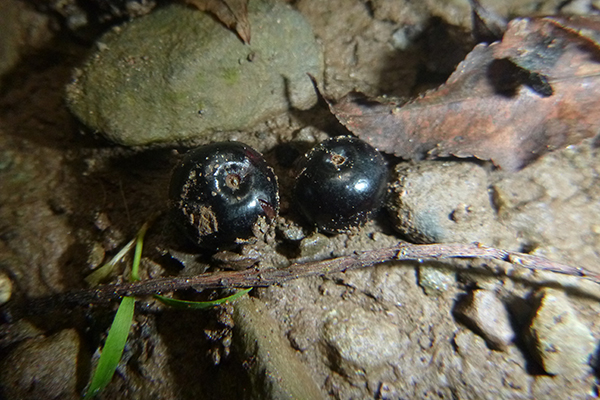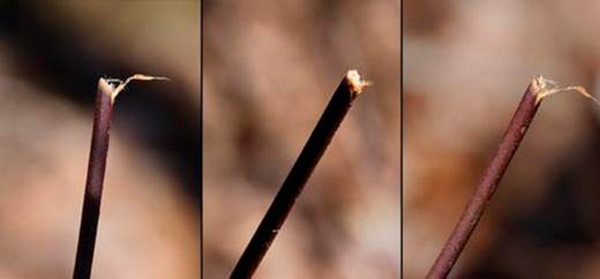Another day, another emerald ash borer (EAB) discovery. That seems to be the way things are going lately. On October 28, logger Jake Rosa was harvesting a woodlot southeast of the Dry Brook Ridge near Arkville, NY in the central Catskills. It was a sunny, cool fall day. Jake was cutting some ash trees when he noticed a lot of woodpecker peck holes (small foraging holes) in the top of one of the trees he had cut down.

The emerald ash borer, or EAB, is a tiny yet devastating invasive insect that threatens multiple ash species with extinction. Photo credit: James E. Zablotny, USDA APHIS
Another day, another emerald ash borer (EAB) discovery. That seems to be the way things are going lately. On October 28, logger Jake Rosa was harvesting a woodlot southeast of the Dry Brook Ridge near Arkville, NY in the central Catskills. It was a sunny, cool fall day. Jake was cutting some ash trees when he noticed a lot of woodpecker peck holes (small foraging holes) in the top of one of the trees he had cut down.

Peeling back the bark, Jake noticed the characteristic s-shaped galleries that indicate EAB.

These twisting galleries are what make the invasive EAB such a dangerous beetle. The galleries eventually wrap all the way around the tree, cutting off its flow of water and nutrients. Even healthy ash trees succumb in five years, and many die much faster than that.
Now on alert, Jake looked around. He quickly spotted several other trees with the characteristic blonde-ing of the bark (see picture below) where the woodpeckers had pecked off the outer bark to get at the EAB larvae underneath.

A closer examination of that bark revealed the characteristic D-shaped exit holes that adult EABs make when they emerge from the tree in May through July. The top of the pen in the picture below gives you an idea of the size of these tiny, 1/8” diameter exit holes.

Jake’s sighting has now been confirmed by authorities as EAB. His discovery is a reminder of the importance of buying your firewood locally and not moving trees from your or someone else’s woods in an EAB Quarantine zone or to a location more than 50 miles away from where the trees came from. That’s because EAB is spread primarily by movement of firewood.
EAB is a major problem in much of the US, and New York is no different. About 1 in every 10 trees in New York State is an ash, and they’re all at risk of death from EAB. Ash is also a commonly planted street tree, and its wood is used for a host of products from baskets to baseball bats.
If in looking at the photos above you suspect you have EAB on your property, you can get identification assistance by contacting your local Cornell Cooperative Extension office. You can also check out our “Learn to Identify the Emerald Ash Borer” Activity to help confirm your find. Once you know you have EAB, report your sighting to the NYS Department of Environmental Conservation’s EAB hotline at (866) 640-0652. Sharing where EAB is helps ensure that others don’t mistakenly move it and spread this pest farther and wider than it already has.





